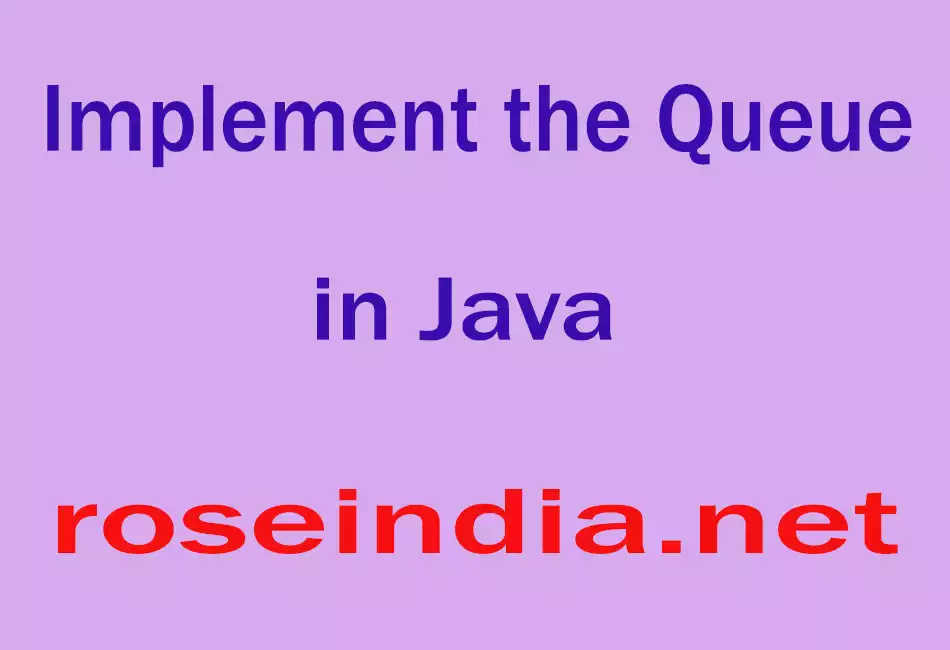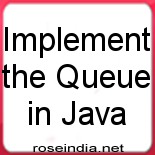In this section, you will learn how to implement the queue.

Implement the Queue in Java
In this section, you will learn how to implement the queue. A queue holds a collection of data or elements and follows the FIFO ( First In First Out) rule. The FIFO that means which data added first in the list, only that element can be removed or retrieved first from the list. In other sense, You can remove or perform operation on that data which had been added first in the Collection (list). Whenever you need to remove the last added element then you must remove all these elements which are entered before the certain element.
The given program implements a queue. It takes all elements as input by user. These values are added to the list and shows first, last and the rest elements present in the list separately. Some methods and APIs are explained below which have been used in the program for the certain purposes:
LinkedList<Integer>():
This is the constructor of the LinkedList
class. This class is used by importing the java.util.*; package. This constructor
is used for constructing an empty list. It can contain integer types data in the
given program because in the declaration of the LinkedList class type checking
has been used. This is
an implementation of the List interface of the Collections Framework. The LinkeedList class provides
inserting and deleting the data to/from the list.
removeFirst():
Above method removes and returns the first element of
the list.
removeLast():
Above method removes and returns the last
element of the list.
list.isEmpty():
This method checks whether the list is empty or not.
remove():
This method used to remove the elements in the list in a specified sequence.
Here is the code of program:
import java.io.*;
|



